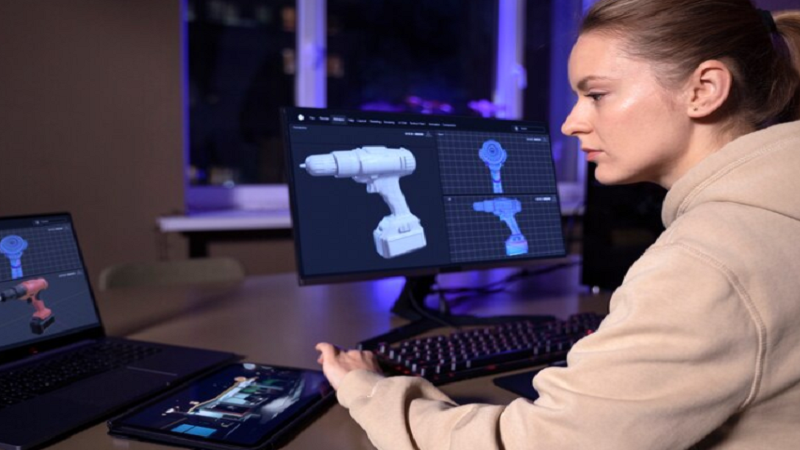Rhinoplasty, commonly known as a “nose job,” is a popular cosmetic surgery procedure that can reshape and enhance the appearance of the nose. When you get a Rhinoplasty, it not only changes your whole face but also your overall look. Many people think all nose jobs are the same, but that’s not true. There are lots of different ways to do nose surgery.
From reshaping the nasal bridge to refining the tip, rhinoplasty offers different options. These include reduction, augmentation, and ethnic rhinoplasty, among others. Each type helps with different problems, whether it’s about looks or breathing better. Doctors can pick the right kind of surgery just for you.
Learning about the different kinds of nose surgery helps you choose what’s best for you. Read on to find out more about each type. This will help you figure out which one fits your needs and what you want to achieve.
Open vs. Closed Rhinoplasty
Before we discuss about the specific kinds of nose surgery, let’s look at the two main ways doctors do the surgery:
Open Rhinoplasty
In open rhinoplasty, the doctor makes a tiny cut on the columella (the skin between your nostrils). This lets them see inside your nose better to work more carefully and precisely during the surgery.
Closed Rhinoplasty
In closed rhinoplasty, the doctor cuts inside your nostrils. You won’t see scars outside. It’s gentler on your nose, but the doctor might not be able to make big changes this way.
Reduction Rhinoplasty
Reduction rhinoplasty is one of the most common types of nose surgery. It aims to decrease the size of the nose by removing excess bone or cartilage. This procedure can address issues such as:
- A prominent nasal hump
- An overly wide nose
- A bulbous or drooping nasal tip
Reduction rhinoplasty can create a more balanced and proportionate facial appearance, boosting the patient’s confidence and self-esteem.
Augmentation Rhinoplasty
Unlike making the nose smaller, augmentation rhinoplasty makes the nose bigger or changes its shape. Doctors do this for people who have:
- A flat nasal bridge
- A small or underdeveloped nose
- A nose that has been damaged due to injury or previous surgery
Surgeons may use various materials to augment the nose, including the patient’s cartilage (harvested from the septum or ear), synthetic implants, or dermal fillers for non-surgical options.
Tip Rhinoplasty
Tip rhinoplasty only changes the end of your nose. It can fix problems like a bulky tip, a droopy tip, or an uneven tip. This surgery is just for the nose’s end and addresses issues such as:
- A bulbous or boxy tip
- A drooping or upturned tip
- Asymmetry in the nasal tip
Tip rhinoplasty is often less invasive than full rhinoplasty and may have a shorter recovery time.
Septorhinoplasty
Septorhinoplasty fixes both how your nose looks and works. It helps the septum, which is the wall inside your nose. If this wall is crooked, it can make breathing hard. This surgery makes your nose look better and helps you breathe easier by:
- Straightening a deviated septum
- Improving airflow through the nasal passages
- Enhancing the external appearance of the nose
Revision Rhinoplasty
Revision rhinoplasty, also known as secondary rhinoplasty, is performed on patients who are unsatisfied with the results of a previous nose surgery. This type of rhinoplasty can be more complex than primary procedures due to scar tissue and altered nasal anatomy.
Revision rhinoplasty may involve:
- Correcting asymmetry
- Addressing breathing issues
- Improving the overall appearance of the nose
Ethnic Rhinoplasty
Nose surgeries that respect cultural looks are becoming more popular. Many people are choosing ethnic rhinoplasty in Turkey to enhance their features while preserving their heritage. This special nose surgery considers the different nose shapes of various ethnic groups. It makes sure the new nose fits well with the person’s face and doesn’t change their ethnic appearance.
Ethnic rhinoplasty considers factors such as:
- Skin thickness
- Nasal structure
- Cultural beauty standards
Non-Surgical Rhinoplasty
If you don’t want surgery, there’s another way to fix small nose problems. It’s called non-surgical rhinoplasty or a “liquid nose job.” The doctor uses special injections to:
- Smooth out bumps or irregularities
- Improve symmetry
- Enhance the nasal tip
This method can’t fix big-nose problems, but it can make small changes. It’s quick and you don’t need much time to recover.
Concluding Remarks
Rhinoplasty can fix many nose problems, including aesthetic and functional ones. There are lots of options, from reduction and augmentation to special types like ethnic rhinoplasty to help people get the nose they want. If you’re planning a nose surgery, talk to a board-certified plastic surgeon who specializes in facial procedures. They’ll look at your nose and tell you which type of rhinoplasty is best for you.




